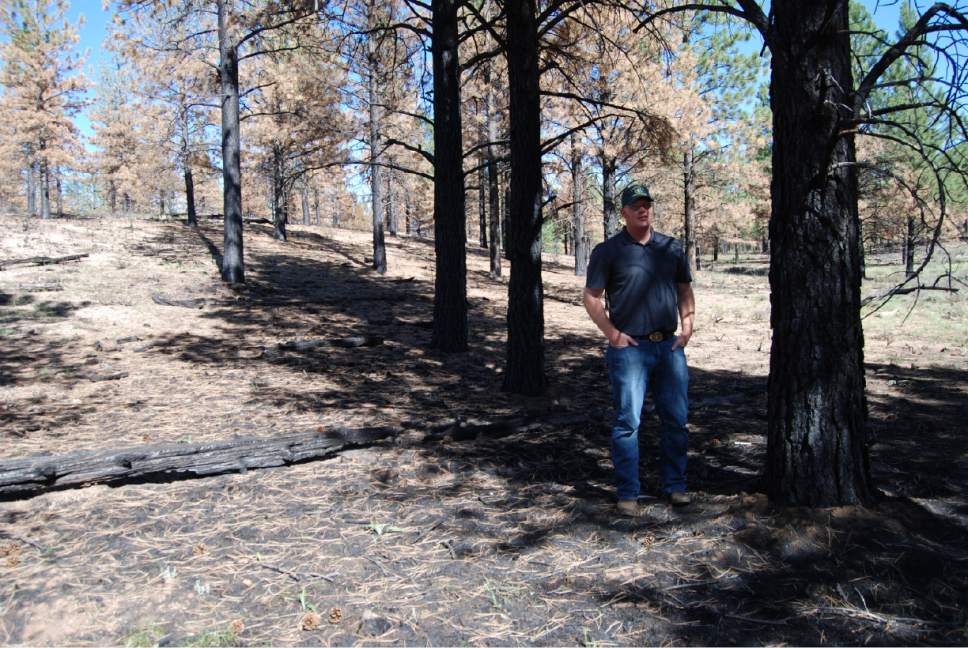This is an archived article that was published on sltrib.com in 2017, and information in the article may be outdated. It is provided only for personal research purposes and may not be reprinted.
Prescribed burning that has sparked controversy in past years got under underway again this week on southwestern Utah's Paunsaugunt Plateau.
Managers of Dixie National Forest are deploying low-intensity flames to clear fallen limbs and vegetation layers from ponderosa forests at Ahlstrom Hollow, three miles north of Tropic Reservoir, according to Dixie spokesman Bode Mecham, who cautioned that smoke would be visible on U.S. Highway 89 and State Route 12 near Red Canyon.
On Monday and again on Wednesday, crews burned 100 acres each day as part of a multi-year plan to clear 5,000 acres in this scenic high-elevation landscape east of Panguitch. The Dixie posts burn updates on its Facebook page.
"If we go with a helicopter we can burn up to 2,000 acres a day, which shortens the amount of time we are burning, but also creates a great deal more smoke in the short term and not every piece of land is conducive to using a helicopter," Mecham said in an e-mail.
Forest Service scientists see controlled fire as the best and most cost-effective way to improve forest health and reduce risk of catastrophic fire, but only in certain situations.
Fire is a natural process that removes debris from the forest floor and takes down small trees and low branches that could act as "ladder" fuels that enable fires to become destructive.
But prescribed fire on the Paunsaugunt two years ago ignited controversy when burning at Dave's Hollow in the first week of June smoked out Ruby's Inn as it was filling with visitors to Bryce Canyon National Park.
At the time, temperatures, humidity and wind were nearly ideal for managing a big burn. Powell District Ranger Paul Hancock took advantage of conditions to deploy a helicopter to drop plastic sphere dispensers, which are essentially ping pong balls injected with glycol that trigger a fiery chemical reaction when they hit the ground.
In a single day the Dixie scorched 2,500 acres, an area that would take three weeks if done solely by ground crews. Officials said the burn results were perfect, but the heavy smoke sparked the wrath of the Garfield County Commission, which passed a resolution warning the Forest Service it would take action to stop burns.
That was the first step toward invoking a new state law, enacted in 2014, that authorizes counties to exercise jurisdiction over federal land if its management "constitutes an imminent threat to the health, safety, or welfare" of the residents. This time around the Forest Service has conducted burn operations better from the county's perspective.
"All we said was, 'You can't risk lives and can't cause damage to peoples' lungs,' " Commission Chairman Leland Pollock said. "Since that time [forest officials] have contacted us. As of now, they are cooperating. They cut back their burning. This reined them in and they are using common sense."
Pollock said he agrees with the goals behind controlled burns, but would prefer the Dixie "bring back active management," better known as logging, to reduce excessive fuel loads. "That," he said, "would allow the sawmills to come back to support correct and sound harvests."
Brian Maffly covers public lands for The Salt Lake Tribune. Maffly can be reached at bmaffly@sltrib.com or 801-257-8713.
Twitter: @brianmaffly





